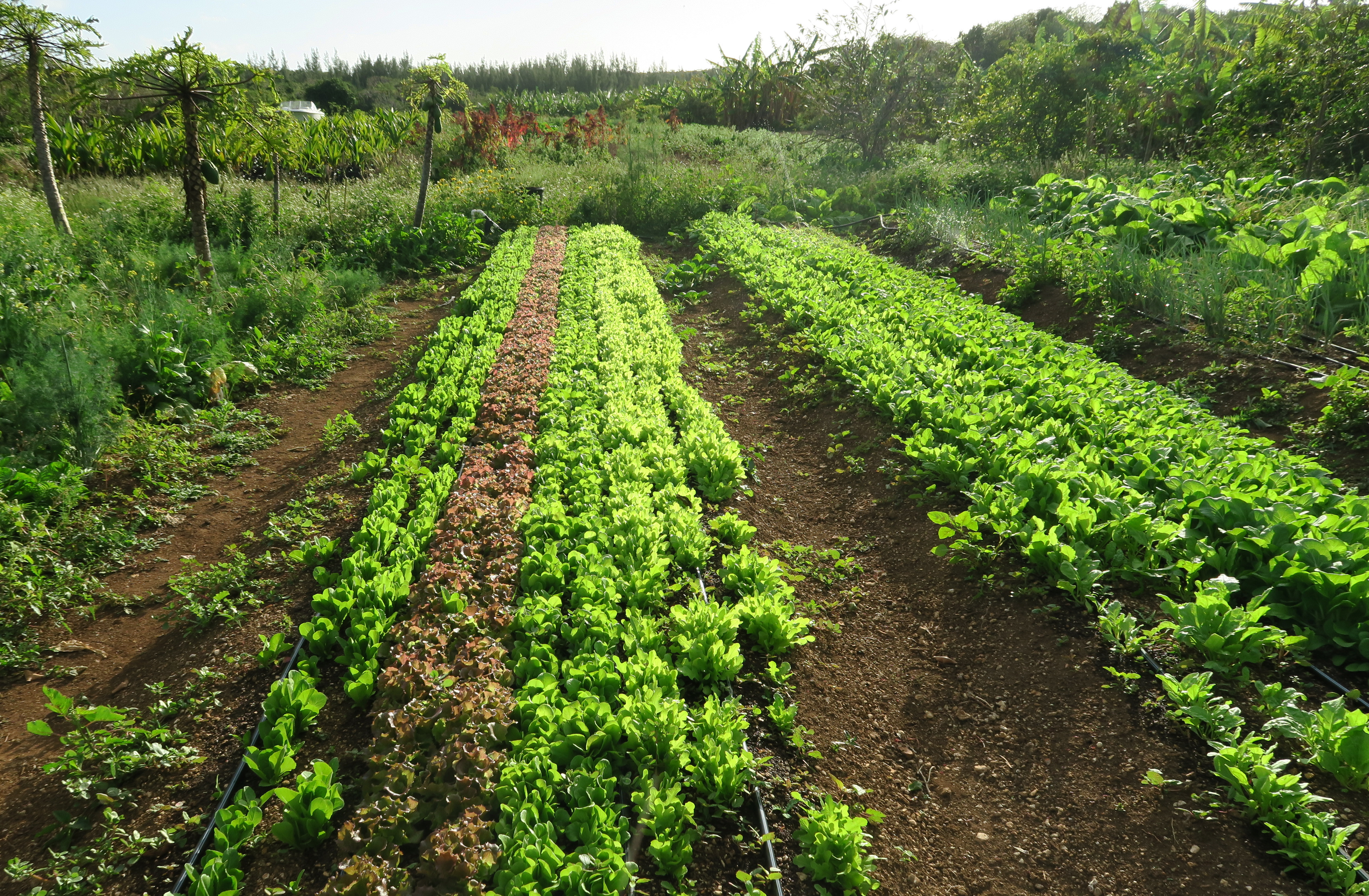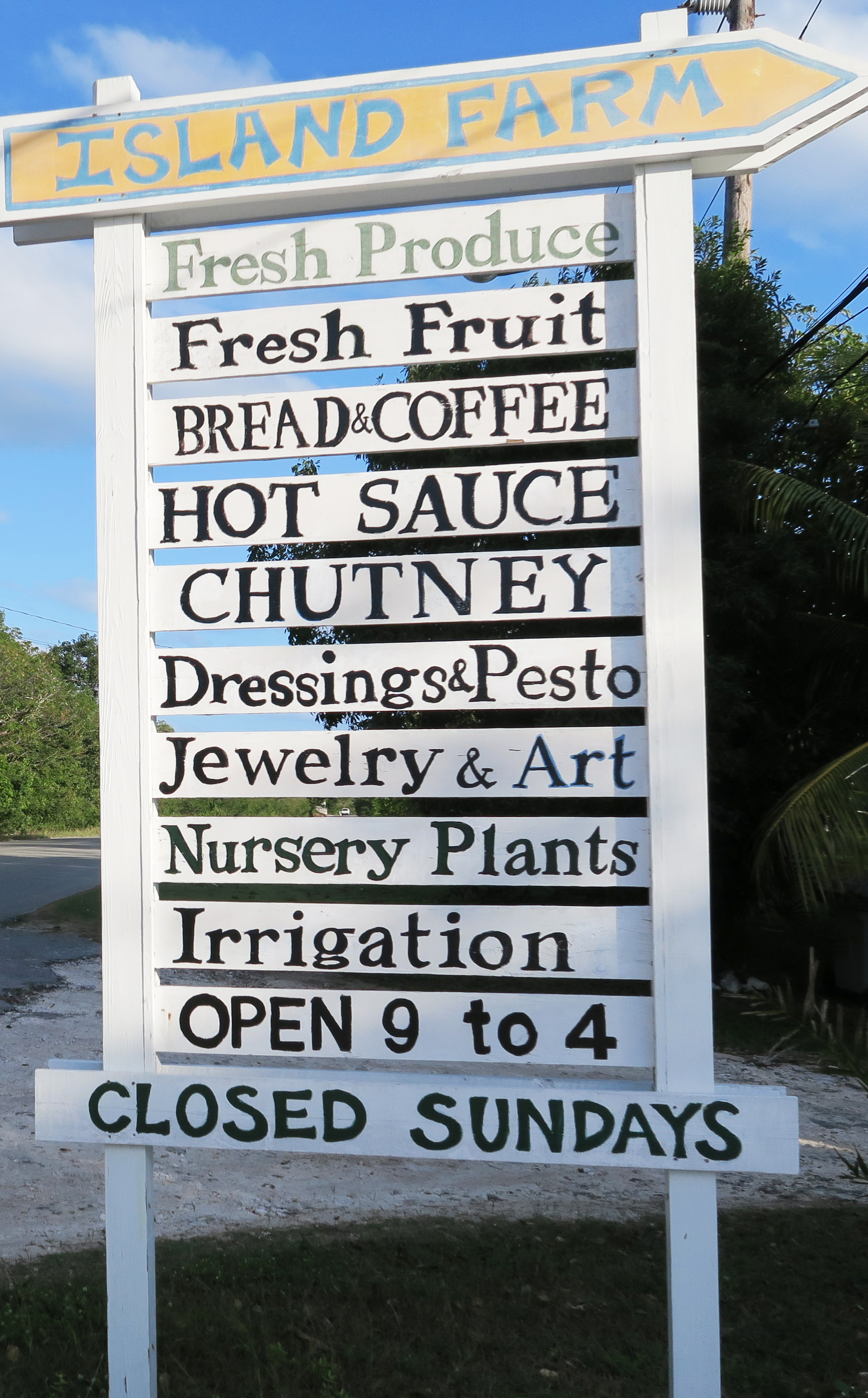ELEUTHERA, BAHAMAS — The sweet scent of basil permeates the balmy late afternoon trade winds on Clyde Bethel’s organic farm on Eleuthera. The sky is a shocking cerulean blue, a not unusual phenomenon on this Bahamian outer island, though one that continually delights.
I’m traipsing along behind Bethel, stepping carefully through rows of vegetables, fresh herbs and fruit trees on his 10-acre farm. Trim and fit, wearing a black tee shirt and dusty jeans, Bethel explains that he spent several teenage years at school in Winnipeg before returning to his native home. Ten years ago, he recognized a need in the community for locally grown fresh fruits and vegetables.
“I grew up in the restaurant business. I got married, had kids and opened a restaurant. Everything came to the island by boat. It took two weeks to get here. I decided to start a farm,” said Bethel.
Farming is not an easy task on this scruffy 180-kilometre-long narrow island that is often celebrated for its pink sand beaches and rocky formations of ancient coral reefs. Located 80 kilometres east of Nassau, the island resembles an elongated comma floating serenely at the outer northeastern edge of Great Bahamas Bank. Most visitors arrive to experience Eleuthera’s low-key pleasures of sun and crystalline turquoise waters; I did, and was surprised to learn that though there are 60 to 70 independent farms on Eleuthera, all produce is packed and shipped to Nassau, where it is then reshipped back to island grocery stores — where it is very expensive and less-than-fresh.


Above: Bethel's lush fields produce many of the farm to table products enjoyed by Bahamians.
“We’re an island that doesn’t have a lot of soil so we have to make our own soil; we do lots of composting,” said Bethel.
Looking around the farm, it is difficult to imagine its landscape as anything other than verdant and plentiful. In one area, unruly tomatoes and beans, broccoli, tomatoes, bok choy and Chinese cabbage striate the fields in multi-tones of green. Irrigated plots contain neatly planted rows of kale, lettuces, mustard greens, beets, carrots, cilantro, oregano, parsley, scallions, arugula, mint, garlic and the ever-fragrant basil. Spinach grows vertically, covering a trellis that spans the width of the roadside farm stand where Bethel and his family sell their produce, as well as barbecue sauces, jams, jellies, chutneys, honey, fresh herb dipping oils, pesto, fish seasonings and dry rubs, all made from homegrown ingredients.
“We are more of a farmer’s market,” said Rea Bethel, Clyde’s daughter, a marketing and art history major at the University of Massachusetts Dartmouth. “We don’t use any pesticides. The farm is completely organic and I don’t use any chemicals because this is what I eat,” added Clyde.
Bethel leads me to the far end of the cultivated land, where compost is piled high, as are rocks removed from the fields. Approximately seven and one half acres of his property is cultivated, and he continues to clear out brush and stones and compost new soil to expand the number and variety of crops he can grow.
The rainy season begins in April, and the growing season spans from October through May. For water, Bethel tried to tap into the aquifer by sinking eight wells. These all turned out to be brackish but Bethel, undeterred, hopes to squeeze more crops out through July.
Taller crops and fruit trees frame the edges of the cultivated fields. Bethel shades his eyes from the sun’s strong glare and points to each variety as we circle back to the humble farm stand, situated near the midpoint of the island on the Queen’s Highway.
“Over there are pomegranate, tangerine and passion fruit trees. Also Key lime, Persian lime, wild lemons, bananas and coconuts. We plant banana trees between coconuts. It causes the coconuts to grow taller to reach the sun,” said Bethel.


Above: Many of the products sought by tourists as souvenirs are produced on Bethel's farm.
Bethel also plants pineapples, a crop that grows well in the island’s rocky soil. Once a bustling industry on the island in the mid-18th century, the prickly fruit’s boom years turned to bust by the end of the century when the United States began developing the crop on its newly-acquired Hawaiian islands. As a nod to the fruit’s important agricultural heritage, a Pineapple Festival is celebrated in June each year in Gregory Town, located 50 kilometres from Bethel’s farm.
The weekend-long festivities, equally enjoyed by island residents and visitors, include pineapple-themed activities such as a pineapple eating contest, cooking contest, and Little Miss Pineapple Pageant.
A self-taught farmer, Bethel continually experiments with what he can grow. This entrepreneurial and adventurous spirit led him to plant macadamias. “They thrived. They went nuts,” he said.
Bethel smiles at me as if he has just invented farming. Which, in a way, he has.
“I learned as I went along. I have to keep it fun. I can’t wait to wake up in the morning.” •
Information
Getting there: Located approximately 240 miles from the coast of Southern Florida and about 60 miles from Nassau, Eleuthera is easily accessed by daily scheduled flights from Fort Lauderdale, Miami and Nassau. Three airports serve the island: North Eleuthera International Airport (ELH), Governor’s Harbour International Airport (GHB) and Rock Sound International Airport (RSD).
Where to stay: The French Leave Resort is a tranquil 270-acre escape overlooking the crystalline waters of Governors Harbour. A premier offering of the Marriott Autograph Collection, the resort features 12 one-and two-bedroom luxury Bahamian villas with beachfront views, spacious living areas, covered verandas and a personal golf cart to ferry guests to the nearby pink sands of French Leave Beach. https://frenchleaveresort.com/
For more info: https://www.bahamas.com/
About the Author
Necee Regis has been writing about travel, food, culture and luxury lifestyles for 15 years for publications including American Way, ShowBoats International, The Washington Post, The Boston Globe, Los Angeles Times and multiple in-flight magazines. Her special interest - some might say obsession - with the world of oysters and shucking competitions has earned her the title "Oyster Connoisseur." She has never met an oyster she didn't want to eat.